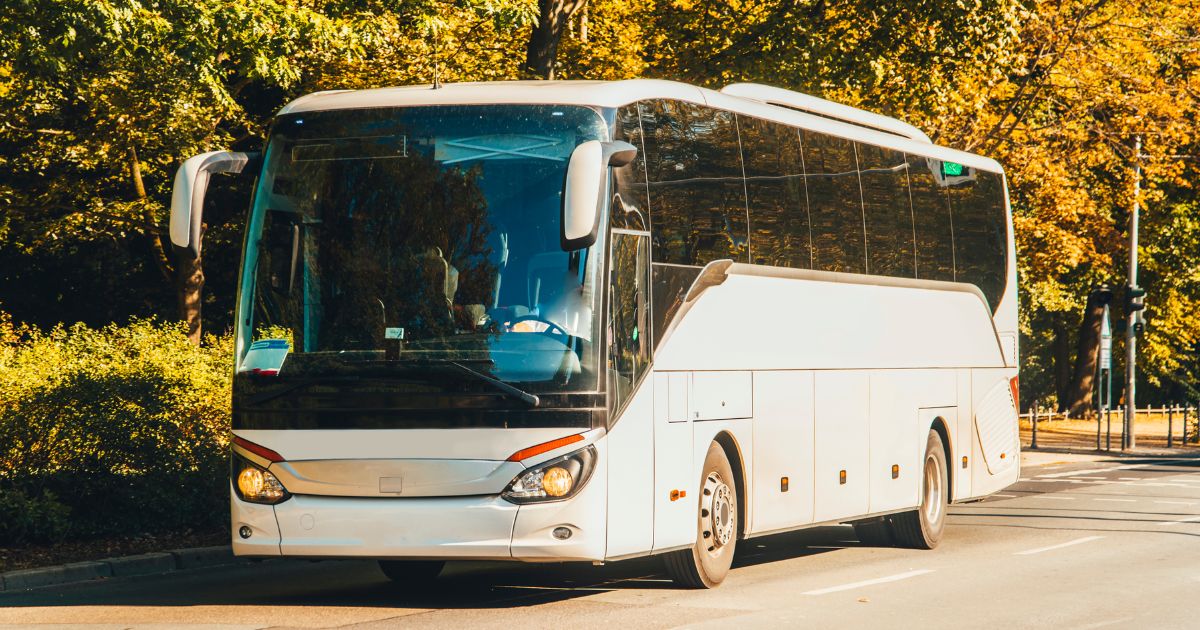Motorists tend to dislike driving around or near buses, because they are large, move slowly, and start and stop frequently. Sharing the road with buses is just part of driving, and these vehicles and the drivers and passengers inside deserve patience and respect from others who share the roads with them. It is always wise to be extra cautious around them, because there are so many lives at stake in one vehicle. You might lose a few minutes of time during your commute, but their safety (and yours) is more than worth the effort.
What are the Most Common Causes of Bus Accidents?
It is not surprising that poor weather conditions cause bus accidents, whether they happen on a neighborhood road in a busy city street. Bus drivers are trained to drive in rainy, foggy and icy weather, but the sheer size and weight of their vehicles make them harder to maneuver. These factors can also make an accident much more serious.
Poor driving also leads to bus accidents, whether it be the bus drivers or another motorist. An inexperienced bus driver might be more likely to end up in a crash, but more seasoned ones also make mistakes. Other things that contribute to driver error include inadequate training, distraction from passengers, using handheld devices behind the wheel, being intoxicated/impaired or feeling fatigued. These buses have extra-wide turning radiuses too, and it is not unheard of for one to hit another vehicle when a driver misjudges a turn.
Bus companies can also be responsible for accidents when they fail to follow important safety regulations. Regular maintenance and safety checks are crucial for buses, and oftentimes certain steps are skipped. A simple thing like a worn-out tire tread could easily cause a bus to hydroplane on a slippery road; a blow-out is another possibility, and incredibly dangerous for buses. Bus drivers can also have tough times driving through narrow and crowded streets, especially when people are slow in moving out of the way. This kind of scenario is a likely setting for fender benders and more serious crashes.
How Can I Drive Safely Around School Buses?
Fortunately, school bus accidents are rare but they can and do happen. Be aware that school buses are out and about in the early morning and mid-to late-afternoon, picking up and dropping off students. Look out for children and parents at bus stops, and for ones who are walking and bicycling to school. Slow down or stop to allow them to cross; they always have the right of way, unless they are at an intersection with a stop sign or traffic light. Kids are often unpredictable, and dart out into the street without warning when they are late or for no reason at all. Decrease your speed well in advance, because you never know what they might do.
Ohio state laws state that drivers must stop at a minimum of ten feet from the front or rear of school buses that are stopped to receive or unload passengers, and are not permitted to proceed until that bus resumes motion. State school buses have red and amber signals and ‘stop arms’ for this very purpose. If there are four or more lanes on a highway, drivers do not have to stop for stopped school buses that are on the opposite side. Violating school bus laws could result in a fine of up to $500. Passing one illegally is also unsafe, and besides a hefty fine you could end up with points on your driving record, higher insurance rates, and even a license suspension.
Again, buses move slowly, so drivers have to do their best to remain patient when driving near them. They are also required to come to complete stops at all railroad crossings. Besides staying calm, it is best to give buses a lot of extra space when driving behind them.
- 10 feet is the minimum distance for safety when encountering a stopped school bus.
- It is legal to pass a moving school bus, but only when there is a dotted line on the road.
- Never pass school buses on neighborhood streets or on the right.
- Follow the posted speed limits, and be extra careful in school zones.
- If you find that you are encountering school buses every day on your way to or from work, try to leave a little earlier or later.
Accidents with Other Buses
Ohio’s regional authority bus systems serves countless numbers of passengers each day, and these vehicles sometimes move faster because they travel on major roads. These drivers are often under pressure to stay on their schedules, and may behave negligently at times. Like other drivers, they might be distracted by cell phones or speed up to make a traffic light, putting themselves, their passengers and other drivers at risk.
There are also other hazards for the passengers inside these public buses:
- If the floor is wet or covered with debris, there is an increased chance for slipping and falling.
- Abrupt starts and stops can also knock down a passenger who is walking to a seat or standing up; these can all lead to broken bones, back injuries, neck injuries and worse.
- Mechanical failures can also adversely affect school and public buses, and accidents can occur without any fault on a driver’s part. This responsibility can be in the hands of the bus company, a manufacturer or a bus repair company, but the chain of evidence might be harder to establish and require more time.
More Tips for Driving Safely Around Buses
Just like trucks, buses have large blind spots and so these drivers cannot always see who is behind or next to them. Follow the golden rule: If you are unable to see the bus driver in the bus’s side mirror, assume that he or she cannot see you. Be ready for them to make wide turns, and slow down and give them more room when they put their indicators on.
- Do not drive when you are fatigued, because the effects can be similar to driving while intoxicated.
- Avoid distractions: keep your cell phone on do not disturb, avoid involved conversations with your own passengers, and do not adjust your makeup, fix your hair, eat or drink when driving around buses.
- Take care of your vehicle with regularly scheduled maintenance that checks your tire pressure, fluids, brakes, steering, lights, and safety features.
In the event of an accident with a bus, it is best to call for emergency help and to pull over somewhere safe and out of traffic if possible. Wait for help to arrive, and provide an honest account of what happened without admitting any fault. Doing the latter could put you in a vulnerable position with an insurance company and aside from that, you could be mistaken.
The bus driver might stay in the bus with the passengers for safety reasons, and you are not required to approach them to discuss what happened or exchange information; emergency services can help out with that. Take care of any medical needs as soon as possible, be cooperative with law enforcement, and reach out to your insurance agency to let them know what happened from an objective standpoint. This might also be a good time to contact a knowledgeable car accident lawyer for help.
The Dayton Car Accident Lawyers at Wright & Schulte LLC Provide Trusted Legal Guidance for Motorists Involved in Bus Accidents
Few things are as frightening as getting into an accident with a bus. Our experienced and knowledgeable Dayton car accident lawyers at Wright & Schulte can help. For a free consultation, call our Dayton, Ohio offices at 937-222-7477 or complete our online form. We provide assistance to families throughout Dayton, Cincinnati, Columbus, Cleveland, Centerville, Toledo, Youngstown, and Miamisburg.



